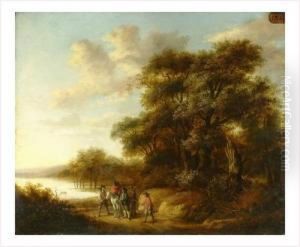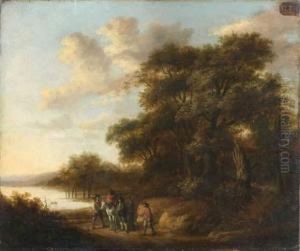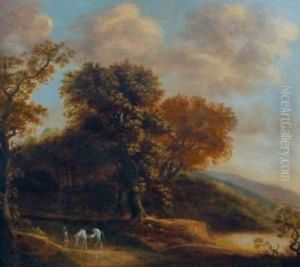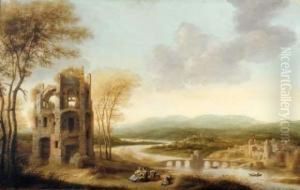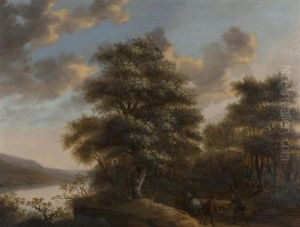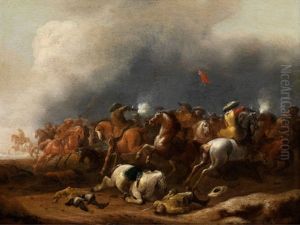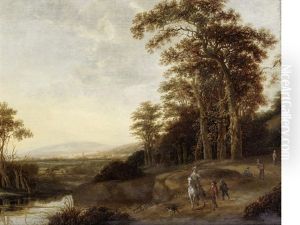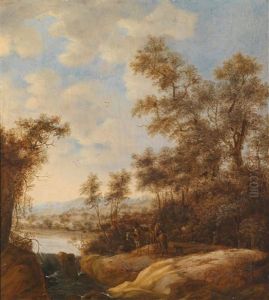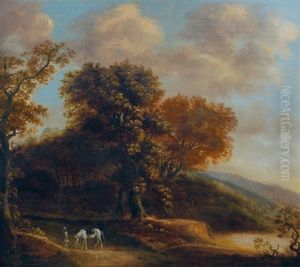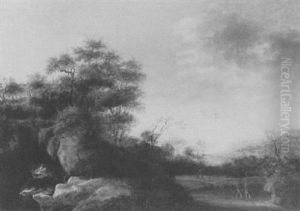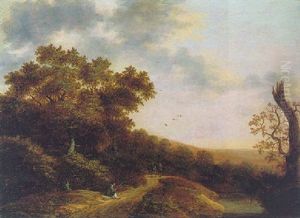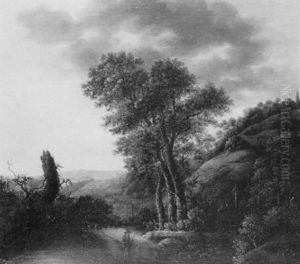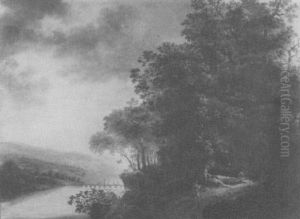Jan Jansz Van Houthuysen Paintings
Jan Jansz van Houthuysen, born in 1604, was a Dutch painter whose life and career were embedded in the rich artistic tradition of the 17th century in the Netherlands, a period often referred to as the Dutch Golden Age. This era is celebrated for its remarkable output in art, with a significant emphasis on genres such as portrait, landscape, and still life painting. Van Houthuysen, although not as widely recognized as contemporaries like Rembrandt or Vermeer, contributed to the period's artistic achievements with his own unique style and focus.
Van Houthuysen's early life and training are not extensively documented, which is common for many artists of his time. However, it is believed that he was active in Haarlem, a city known for its vibrant artistic community. Haarlem was home to the Haarlem Guild of Saint Luke, an association of artists, and it played a crucial role in the development of many painters by providing a platform for networking, training, and showcasing their work. Within this community, Van Houthuysen would have been exposed to the works of leading artists and the evolving trends of Dutch painting.
The precise details of Van Houthuysen's oeuvre are somewhat elusive, as his works were often overshadowed by the more famous names of his era. Nonetheless, he is known to have specialized in portraits, a popular genre among the Dutch middle classes. His portraits are characterized by an attention to detail and a keen interest in portraying the social status and personality of his subjects. This was a common practice among Dutch portraitists, who sought to capture not just the physical likeness but also the essence of the individual.
Jan Jansz van Houthuysen's contribution to the Dutch Golden Age of painting, while not as extensively celebrated as that of his peers, reflects the depth and diversity of talent during this period. His works, where they survive, offer insights into the cultural and social dimensions of 17th-century Dutch society. Van Houthuysen passed away in 1666, leaving behind a modest but meaningful legacy in the history of Dutch art. His life and art exemplify the broader narratives of Dutch painting during the Golden Age, highlighting the richness of the period's artistic landscape beyond its most famous figures.
